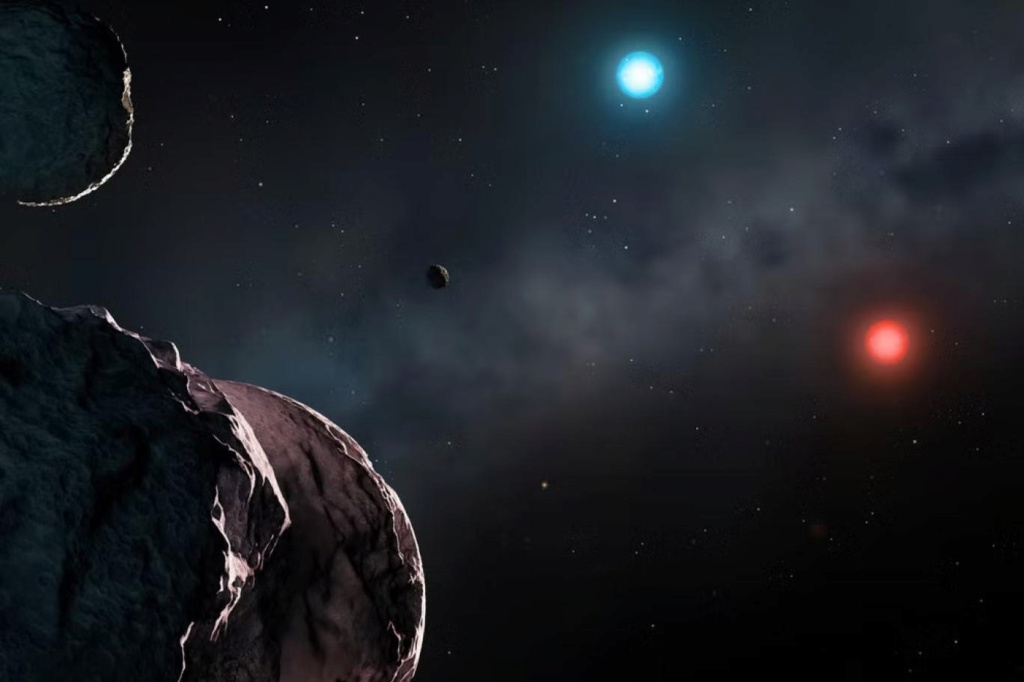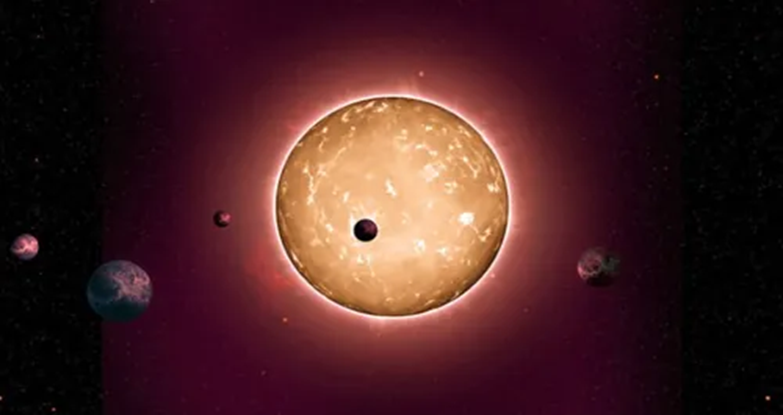Astronomers discover a new "star system" that may be the oldest in our galaxy
Two white dwarf stars once similar to our Sun are pulling the rocky debris of their once satellite planets
Artist's illustration of white dwarf stars (Dr. Mark A. Garlick)
Scientists may have been able to spot a new star system that may be the oldest in our galaxy, consisting of two white dwarf stars, and the remains of rocky planets that are more than 10 billion years old.
A white dwarf star is a star like our Sun that eventually consumes most of its thermonuclear fuel, swells into a large red giant star, and then contracts and cools into a white dwarf star.
A research team led by scientists from the University of Warwick was able to discover two white dwarf stars about 90 light-years away from Earth, and their color changes due to the fall of materials from the former rocky planets on the two stars, which are planets that were likely destroyed during the red giant stage.
According to a paper published on Saturday in the Monthly Bulletin of the Royal Astronomical Society, the age of the white dwarf star "WDJ 2147-4035" WDJ2147-4035 is about 10.7 billion years, while the second bluish star "WDJ 1922 + 0233" WDJ1922 + 0233 is a little younger.
"We have found the oldest stellar remnants in the Milky Way galaxy polluted by Earth-like planets," Abbigail Elms, PhD student at the University of Warwick and lead author of the study, said in a statement. The planets died before the Earth was formed.
In the observations, the researchers identified the two stars using the European Space Agency's Gaia space observatory, and then used the European Southern Observatory's X-Shooter spectrometer to analyze the starlight in order to measure the material in those stars.
The reddish star WDJ 2147-4035 showed signs of contamination with sodium, lithium, potassium, and possibly carbon from the remnants of planets around stars.
"The red star 'WDJ 2147-4035' is a mystery because the accumulated planetary debris is very rich in lithium and potassium, unlike anything known in our solar system," Elms said. "This is a very interesting white dwarf, as its very cold surface temperature, the minerals that contaminate it, its ancient age, and the fact that it is magnetic, make it extremely rare," she added.
The blue-tinged star WDJ 1922+0233 appears to be contaminated with material very similar to Earth's crust in composition.
"These metal-polluted stars show that Earth is not unique, but rather that there are other planetary systems with planetary bodies similar to Earth," Ms. Elms continued, adding, "There are also other stars on the same life path as our sun that are destined to become white dwarfs." .
And she added, "Cold white dwarfs consist of the oldest stars in our galaxy, and provide information on the formation and evolution of planetary systems around the oldest stars in the Milky Way."
source:Websites



